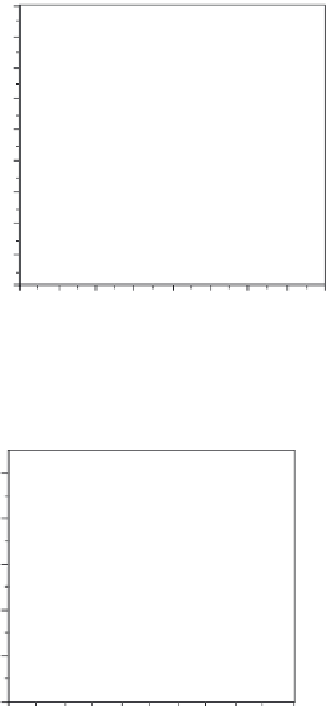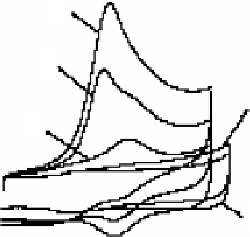Biomedical Engineering Reference
In-Depth Information
350
300
250
e
d
200
150
b
c
100
50
0
a
50
100
0.4
0.2
0.0
0.2
0.4
0.6
0.8
1.0
1.2
E/V vs SCE
FIGURE 17.1
Cyclic voltammograms of cyt
c
/MWNT modifi ed electrode (c, d, and e) and MWNTs
modifi ed electrode (a and b) in 0.1 mol/l PBS containing no H
2
O
2
(a and c), 0.8 mM H
2
O
2
(d), and 1.6 mM
H
2
O
2
(b and e). The scan rate is 200 mV/s. (From [195], with permission.)
2.5
2.0
1.5
1.0
0.5
0.0
0
100
200
300
400
500
Time/s
FIGURE 17.2
Amperometric response of cyt
c
/MWNTs electrode to H
2
O
2
. Conditions: a
0.20 V
constant potential modulated with 50 mV pulse in the time intervals of 0.5 s, successive additions of 10
L
1.8 mM H
2
O
2
to 10 mL 0.1 M pH 7.0 PBS and the stirring rate of solution is 400 rpm. (From [205], with
permission.)
µ
Oxygen is an essential component of living organisms, so the study of reactive
oxygen intermediates is an important fi eld. About 5% of oxygen consumed by biosys-
tems is used to produce superoxide [206]. The main sources of reactive oxygen spe-
cies (ROS) are electron-transport chains, active phagocytosis, and the activity of some
enzymes [206-208]. ROS are able to trigger transcription [209] and to protect mac-
roorganisms from bacteria and viruses [210]. ROS have been linked to several toxic-
ity processes, including damage of proteins, membranes, DNA, and enzymes [211].
It has also been linked to various pathological situations, including cancerogenesis,
heart disease, reperfusion injuries, rheumatoid arthritis, infl ammation, and aging [212].









Search WWH ::

Custom Search